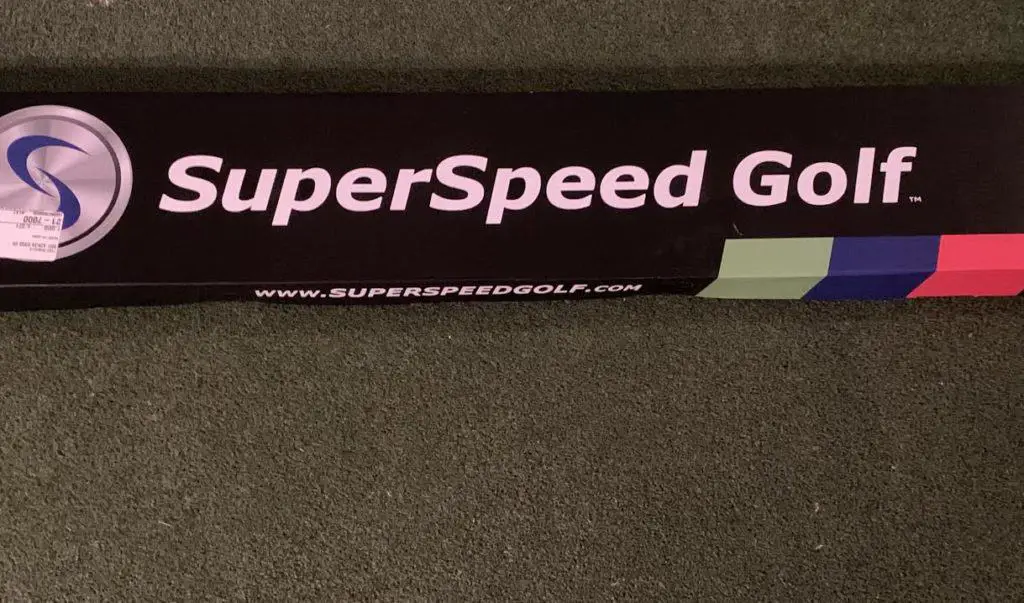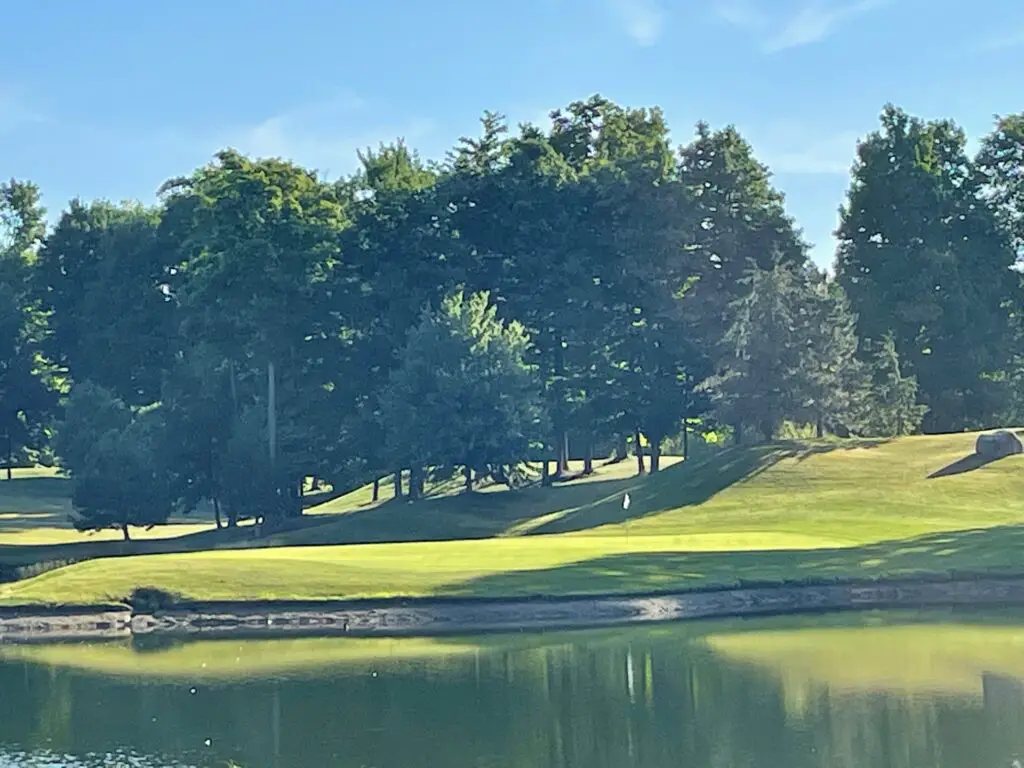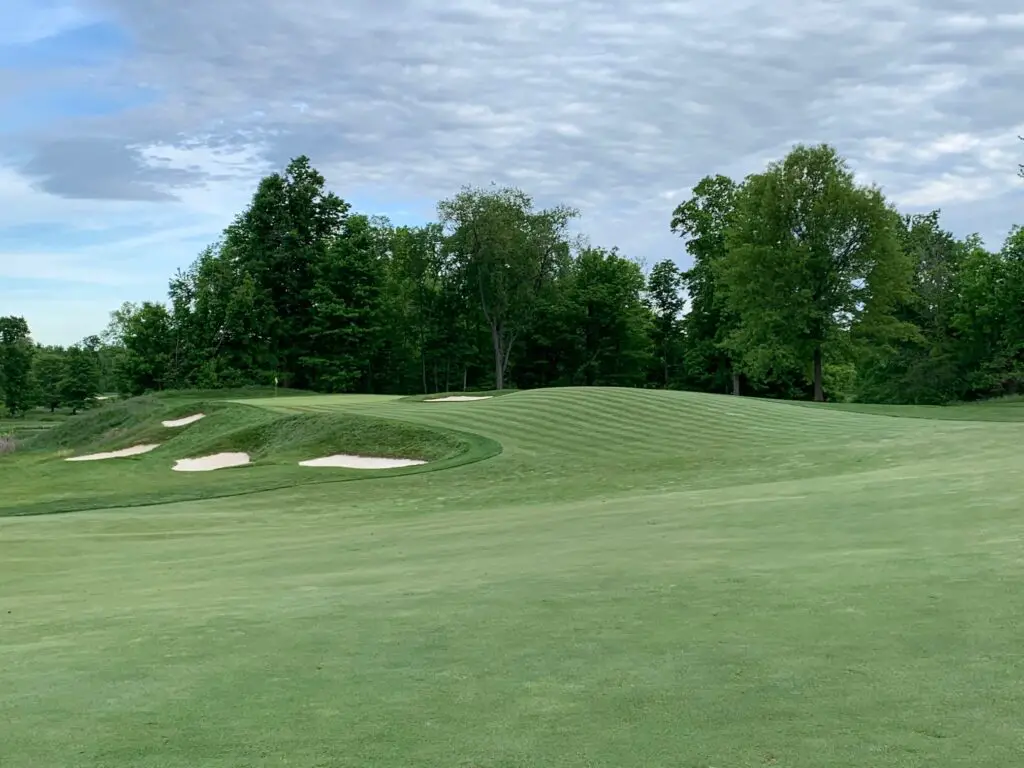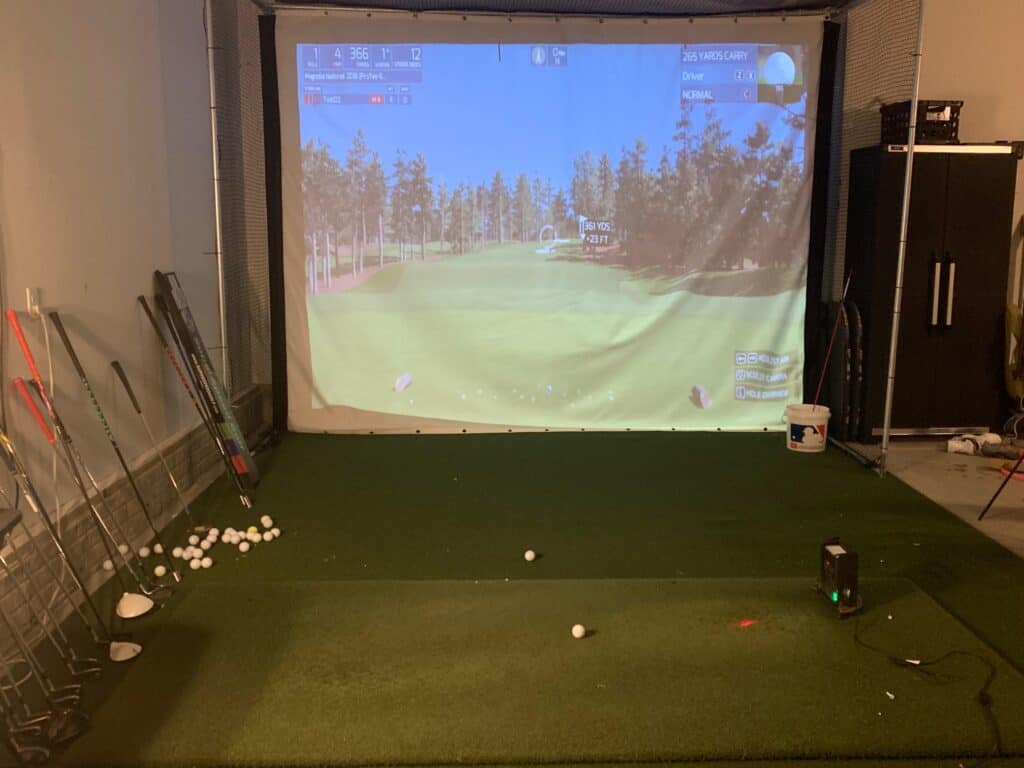Golf can be a difficult game.
For most golfers, it can also be frustrating as many golfers often perform below their levels of expectations.
Ultimately, golfers struggle to get better in many cases and stay at certain levels for a long time.
The mindset becomes “I am so bad at golf.” The good news is that with the right plan, the golfer can start to make progress over time with the right approach.
So, how do we fix this all?
How can we truly get better at golf and not feel like we are so bad at golf?
Why Am I So Bad At Golf?
Golfers that struggle the most frequently have a below average swing, struggle with course management, have unrealistic expectations, and simply don’t practice enough.

Reason #1: Below Average Swing
The golf swing is complicated, but a golfer can make simple changes that help them get the ball started in the right direction with a predictable curve. Many of the worst golfers also struggle with contact. They hit either thin or thick shots robbing them of overall distance and making distance control difficult.
Building skill in any swing is essential. Too many golfers pay too much attention to how their swing looks vs how their swing works. By building skill the golfer will see results quicker.
Solution: We believe golfers should work on the following:
- Low Point Control: The best golfers are able to strike the ball solid a high percentage of the time. This starts with controlling the low point of the swing.
- Start Line and Predictable Curve: The best golfers are able to start their ball on a consistent start line with a predictable curve.
- Swing Speed: The best golfers have enough swing speed to play the courses that they most frequently play.
The best way to build a quality swing is to build skill in each of these three areas.
Skill Builder #1: The Low Point Control Drill
- Take some yard paint and paint a 1-2 yard long line.
- Setup with 55% of your weight on your front side.
- Try to hit the target side of the line and see how many times out of 10 you can do this successfully!
- Repeat this drill every day for a month, tracking your progress and your ability to do this successfully in trials of ten.
- You may need to start with half swing and progress to full swings.
If you are struggling, put more weight forward and work on keeping your head still to help control the low point in the swing.

Skill Builder #2: Stock Shot Drill
- At the driving range, set up an alignment stick about 6-8 yards in front of you, straight down your target line.
- If you have a second alignment stick, set the stick 3-4 feet right of the first stick (for a draw) or left of the first stick (for a fade).
- Complete your initial assessment to see how many times out of 10 you can start the ball to the right or left of your target. Pick one side and measure your game at this point.
- The goal is to eventually complete this successfully 7 out of 10 times!
Skill Builder #3: Increase your swing speed
Speed swing and distance is a vital part to overall consistency. If you are hitting wedges or 8 or 9 irons into greens vs hitting 4 and 5 irons or hybrids, you are going to score better because they are easier to hit on a more consistent basis.
The game of golf has evolved to where speed is important in the game of golf. The faster your swing, the further the ball flies and the more shorter irons or wedges you have into a green.
Training for speed is a great idea and one worth exploring!
If you are going to train for speed, I would highly recommend the SuperSpeed Training System.
Gone are the days of simply being content with the distance you currently hit your golf ball. Many older golfers have proven over the past several years that an increase in swing speed is possible.
There are training systems to help you get your game to the next level and distance is arguably the fastest way to make this happen!
My number one recommendation is to check out SuperSpeed Golf and their protocols to help you find a safe way to increase your swing speed.
I spent many years wondering how I can increase my swing speed. When I was playing junior golf, we weren’t fortunate enough to have some of the training aids and knowledge that is now available. Smart people have studied the golf swing and have created training aids and protocols to help all golfers increase their distance!
At around the same time, the statistics from the PGA Tour have become more clear and the importance of speed is acknowledged by many to be a key to being the best on the PGA Tour.
Within the past several years, there have been several products hit the market to make speed gains possible. While many people for many years waited for the latest driver to come out to gain an additional 5-10 yards, you can now do this even with your current clubs.
Did you know that with the SuperSpeed Training System you can gain 5-8% increase in swing speed as early as the first training session? This would allow you to gain somewhere between 10 and 30 yards depending on your current swing speed.
The SuperSpeed Training System is based on three different swing speed sticks all weighing at different weights. There is a green club that is 10% lighter than the average driver, the blue club which is 5% lighter and the red club which is actually 5% heavier!
Following their prescribed protocols the golfer completes the training every other day. The total time to complete most of their protocols is between 10-15 minutes. Most people can find the time to make this happen. The golfer will also need a swing radar to measure their progress.
The science behind the SuperSpeed Training System is based on overspeed training. Overspeed training has been around for several decades now and has been used by olympic athletics in the sport of Track and Field.
The science behind this overspeed training is based on the premise that your brain will only allow your body to move as fast as it feels it can stop safely! So, you get to work and swing the clubs as fast as possible, retraining your brain to allow you to swing your driver faster.
For more permanent results, the golfer should continue these training protocols for several months. The initial 5-8% is great and can become more permanent with the right length of training. The golfer can expect to continue to break down barriers every several months at a 1-2% increase.
My own experience has been an increase of 7-10 miles per hour on average from between 98-101 all the way up to 106-109. My goal is to hit the PGA Tour average of 113 mph in the coming months. I will continue to train every other day and watch in amazement as I am hitting drivers longer now than ever before!
Phil Mickelson (a senior golfer now) has been known to increase his swing speed in the past year or so and is close to 120 miles per hour in his swing speed. There are potential results for golfers of all ability levels and age!
Check the current price on SuperSpeed Golf System, here!
| Original Swing Speed | After 4-6 Weeks | New Carry Distance | Total Distance |
| 95 | 102 | 245 | 265 |
| 100 | 108 | 259 | 279 |
| 105 | 113 | 271 | 291 |
| 110 | 118 | 283 | 303 |

Reason #2: Struggles With Course Management
Golfers frequently pick the wrong target lines and often select a club on approach shots that doesn’t provide enough distance. A portion of course management has to do with where your mental side of the game is at the time. Once a golfer becomes negative, they often make poorer decisions.
There are two common faults here:
- Golfers fail to pick a start line that keeps the ball in play off the tee.
- Golfers fail to take enough club to get the ball to the middle of the green.
As a result, golfers play from the trees most of the day and when they do hit a fairway, they struggle to hit the ball far enough often due to poor contact or poor club selection.
There are different strategies that can be used depending on the level you are trying to get to.
These posts linked below help give the golfer a better idea on course management to break through your next barrier.

Reason #3: Unrealistic Expectations
Some golfers might quit a round mentally as early as after the first tee shot.
I have seen this scenario before, golfer hits their first tee shot out of bounds and then gives up on the round mentally and fails to truly manage their round for the next four hours and 17 holes and aimlessly hits golf shots, failing to truly work at betting better.
Too many golfers have unrealistic expectations. Earlier this month I played in a four man scramble and on shots from 145 yards, people on our team were expecting us to hit it to 5 feet every time. When in reality, that would be a great shot for a PGA Tour player.
Here are some key stats to keep in mind if you are growing frustrated with your lack of execution. Some of these stats might help put your shots into a better perspective and stop beating yourself up after every shot you hit or every putt you miss!
- The average proximity to the pin from a 100 yard shot in the fairway on the PGA Tour is 18 feet.
- The average proximity to the pin from 125-150 yards from the fairway on the PGA Tour is 23’4”
- The average proximity to the pin from 150-175 yards from the fairway on the PGA Tour is 28’6”
- The average make percentage from 8 feet on the PGA Tour is 50%
Keep some of these stats in mind during your next round and keep your mind right over the 18 holes. Having unrealistic expectations leads to golf not being fun. Use the stats above yto keep your centered.

Reason #4: Lack of Practice
Let’s face it, being decent at golf takes some time and there are many barriers to playing enough golf to reach your level of expectations.
What to work on at the driving range (5 Tips)
For many golfers, there is work, family, or other commitments that can keep them from practicing as much as they want. And then when they do practice they have a poor practice routine and aren’t building skill as much as they are simply hitting clubs, hoping to find a swing feel or thought that will carry them through the next round.
I have two solutions for you:
- Find a way to practice more often (see golf simulator option below).
- Find a way to practice better (use the drills above to build skill).
How to practice golf without going to the range
Golf Simulator recommendation!
Within the past several years, I have been able to get very close to a scratch level golfer. Over my past 10 rounds, I am averaging par on my home course. So what has been the difference?
I have access to practice throughout a season on my home golf simulator and during the winter months, when the weather sucks, I play around 20 rounds per month on my simulator. This pays off big time as your head into the spring or during those rounds in October in November when a golfer can stay sharp during the week on a home golf simulator.
My Secret To Golf Improvement
Let’s face it, in order to get really good at golf, we must practice frequently. About three years ago, I made the leap and invested in a golf simulator build for my garage. I went with a SkyTrak Launch Monitor and the TGC software and can now play over 100,000 courses including Augusta, Pebble Beach, Bethpage Black, Whistling Straits. St. Andrews and many other of the top 100 courses in the world.
This golf simulator setup, which is more affordable that you might imagine, has been a game changer. I can now play golf everyday of the year regardless of rain, snow, cold weather or time of day. I can practice or play rounds of golf. I can stand in the 11th fairway at Augusta and with the auto-rewind feature I am able to practice my approach shots from various differences.
It is worth checking out through Rain or Shine Golf as they offer some incredible packages along with financing offers that are difficult to beat.
Some direct links to Rain or Shine Golf for pricing and financing:

Take Action – What You Can Do Today to Get Better
What does this mean for you? I believe in the following recipe to get better:
1 – Improve your motion in the golf swing by identifying a golf instructor. Here are some options:
Here is a list of golf instructors that we have reviewed:
2 – Train to swing faster and improve your swing speed. Here are some options:
Looking to gain more Speed and Distance in your swing. Two Options:
3 – Understand course strategy and work to break through your next barrier. Here is a series on breaking through:
We have provided guides on how to break 100, 90, 80 and 70. Check out more below, if interested.
4 – Practice Frequently
Did you know that I build a golf simulator in my garage and have played over 500 rounds of golf on my SkyTrak system? It has been a game changer and one worth checking out. Here are some of my other posts on golf simulators frequently asked questions:
- Is a Golf Simulator Worth It?
- How to Build a Golf Simulator?
- What is the Best Golf Simulator?
- Golf Simulator Accessories?
- How to Build a Golf Simulator for under $7000
- Top 11 Reasons to Buy a SkyTrak
- How to Build a Golf Simulator for Under $1000
- Why Build A Golf Simulator?
- What Space is Needed?
- Can A Golf Simulator Improve My Game?
- How Much Does A Golf Simulator Cost?
- Don’t Forget to Check out our 15 best golf swings of all time.
